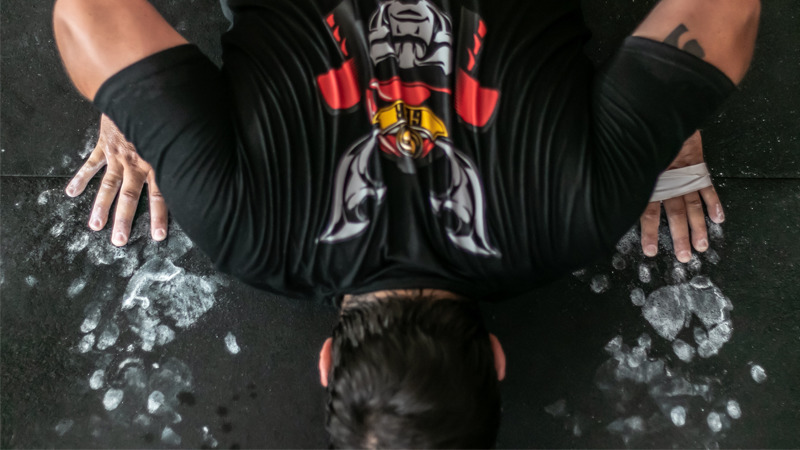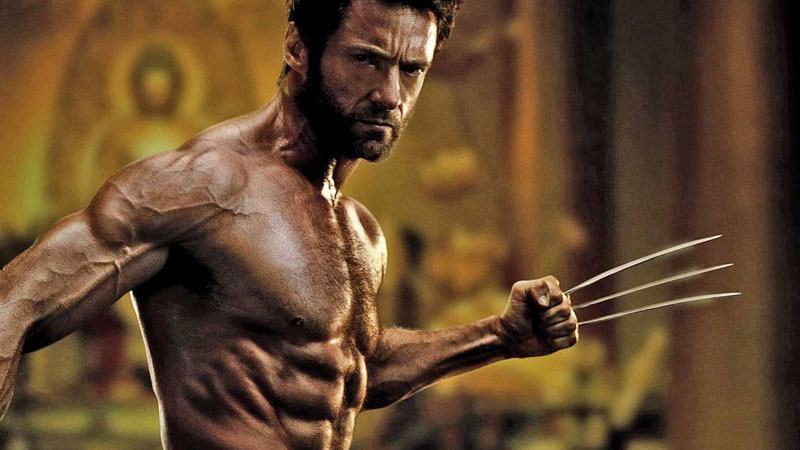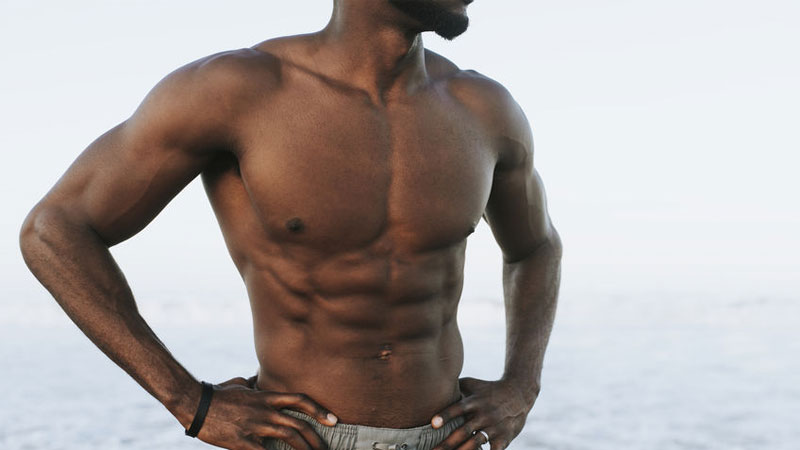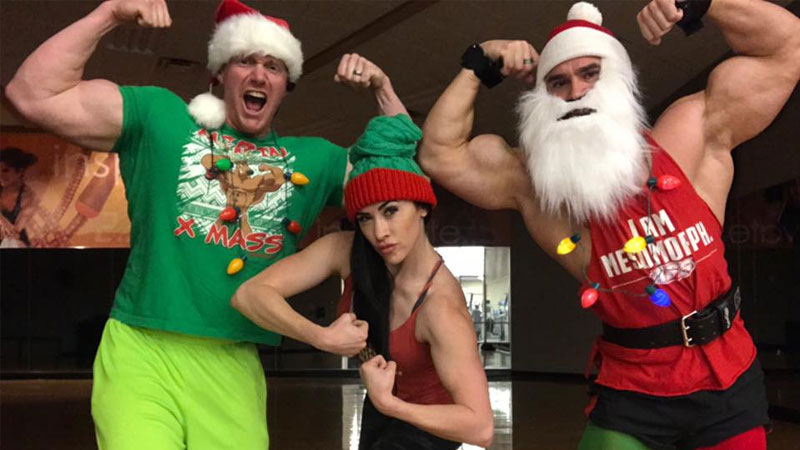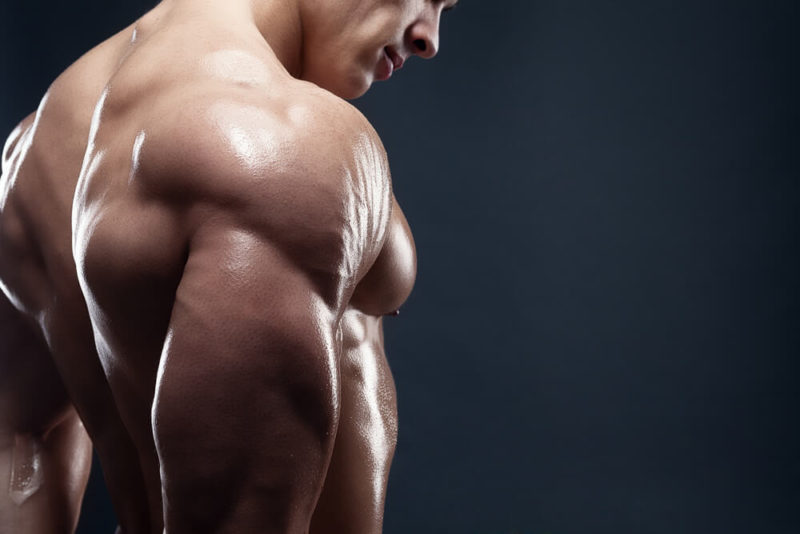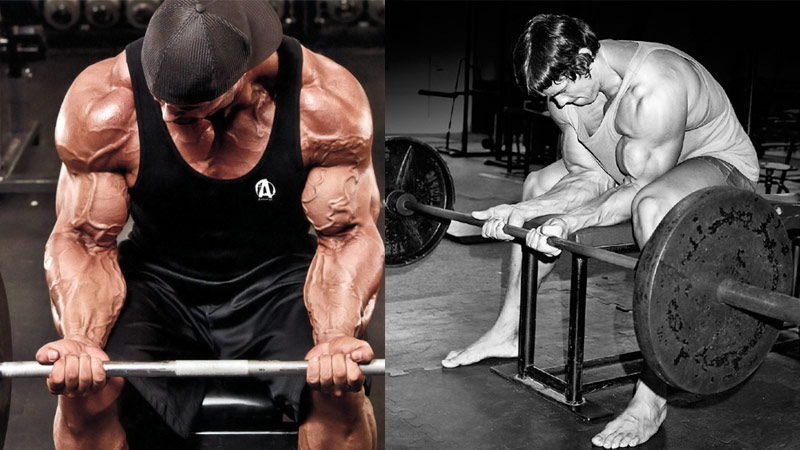
There’s no truer indication of who’s the dominant alpha male than grip strength. Whether it’s nailing that first impression with a firm handshake or ripping a barbell in two, it’s all relative to our status.
Sometimes a man’s forearms say it all. Just one look at the thick cables extending from his elbows and you know he could crush a Hummer exhaust pipe barehanded.
One of the age-old tried and tested methods of growing these slabs of muscle are wrist curls. They might not shatter the gym floor like a deadlift or drench the panties like a 300lb bench, but they work.
If there was ever a silent assassin in the weightlifting world it’s these babies. By employing the often overlooked wrist curl into your program, you could potentially boost every other aspect of your entire life.
You’ll excel in grip-dominant sports like bodybuilding, MMA, football, and wrestling. Big lifts that previously slipped through your pathetic fingers will be yours for the taking. And finally, you’ll be able to shoot a Glock .45 Caliber G.A.P. like it was made for a child.
By the end of this article, you’ll never skip a forearm workout ever again. Wrist curls will become your new bicep curls, and those skinny shoelaces hanging from your sleeves will be thicker than a shipyard rope.
Key bro points
- Wrist curls primarily target the forearms
- When done correctly wrist curls can increase grip strength
- Grip strength is a direct indicator to whole body strength
- Without a strong and firm handshake, you’re getting nowhere in life
- You only need to perform wrist curls a few times a week
Wrist Curls: Amplifying Forearm Function

Forearm training makes total sense, considering most of us wear t-shirts and stringers daily.
Our choice of clothing as bros means your arms are in consistently in sight. So, why the hell wouldn’t we want to train them to look awesome? We can’t think of any reasonable excuses either.
When you double up the aesthetic advantages with the massive number of physical bonuses it’s a no-brainer. Using wrist curls to grow a stronger and better-adapted forearm will make you a monster in the iron realm.
Never again will you have to face the soul-destroying reality of failure due to grip. You know it, everyone who heard the shameful clang of dropped DB’s knows it, your inferior forearms cost you that final set. Hang your head in shame, bro.
Only kidding! It’s time to forget that guy, he doesn’t exist anymore. Adios, our scrawny amigo.
We’re building a new breed of bro with supercharged power cables hanging from his shirt. Let’s break down what we need to do to amplify forearm function…
[infobox] Key point: Stronger forearms can increase overall strength gains. [/infobox]Dynamic vs. Isometric Training
If you were to walk into any gym today and take a survey to find out who trains their forearms you’d find a mixed response. Some dudes don’t believe the truth in targeting them. Even if they’re responsible for controlling our final point of contact with the bar.
We’ll not lie to you either, there is some merit to what they say. Yes, we do inadvertently train the forearms whenever we carry a load, whether it be for 10 or 10,000 reps. But that doesn’t mean we shouldn’t target that area.
By squeezing the bar as tight as possible we can definitely increase how hard the forearms work. However, this is still only banking on stress caused by isometric contraction. And when it comes to forging muscle development, dynamic exercises are king.
By rolling the wrist across its full range of motion we are exposing the forearms to optimum mechanical tension. This is the primary mechanism for muscle growth and understandably something we should hold as our highest priority.
A certain level of tension can be achieved during passive isometric holds like gripping a heavy barbell. But it’s simply not in the same league as that caused by full ROM movement, which is why curls are crucial.
Firing Up The Forearm: The Major Muscles Developed by Wrist Curls
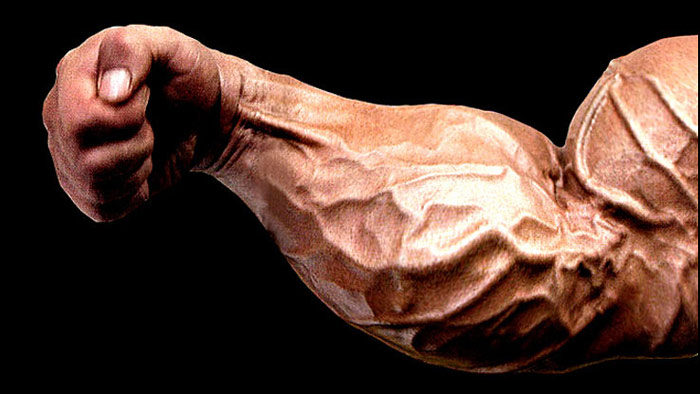
In total there are around 20 muscles that complete the forearm and each one resides at either a deep, intermediate, or superficial layer. Their functions vary greatly, as one may pronate the entire forearm, whilst another controls the fingers via super long tendons.
But for the sake of not turning this article into a full-on anatomy masterclass, we’re gonna focus on those directly impacted by curls. That leaves any pronating or supinating fascial sacks of fibers right out of the picture.
What we do need to understand is that those residing on the anterior control flexion. Consequently, this also means that it’s the posterior side handling extension.
Stop what you’re doing right now, move your wrist around, and get to grips where you’re feeling the tension. You’ll probably also feel that these muscles are also less explosive than others like your hamstrings or biceps.
This is because they’re predominantly made up of slow twitch Type 1 fibers, which are considered harder to grow. It is possible to see game-changing results, but we need to be patient and persistent.
Flexion
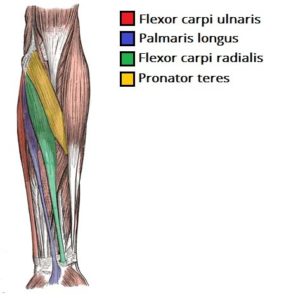 Flexion within the wrist can be seen by placing the arm straight out in front and rolling the wrist until the phalanges (fingers) point towards the floor. The main muscles involved here include:
Flexion within the wrist can be seen by placing the arm straight out in front and rolling the wrist until the phalanges (fingers) point towards the floor. The main muscles involved here include:
- Flexor Digitorum Superficialis
- Flexor Digitorum Profundus (4 Heads)
- Flexor Carpi Radialis
- Flexor Carpi Ulnaris
- Palmaris Longus
- Flexor Pollicis Longus
Extension
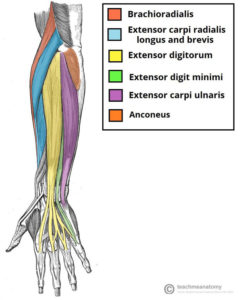
Now for every action, there has to be a reaction. When we lift we get swole, and when we get swole we get laid. That’s just the simple science of being a bro.
But for this article, all we need to know is that the opposite of wrist flexion is wrist extension. Imagine revving a superbike and you’ll understand the specific mechanics we’re talking about.
Here are the main muscles used to fire a Ducati into action:
- Carpi Radialis Longus
- Extensor Carpi Radialis Brevis
- Extensor Carpi Ulnaris
A Balanced Approach
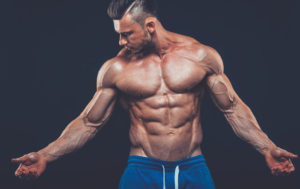
Because it’s not the same muscles that control both extension and flexion we must train each action equally. Without doing so we can create gains-severing imbalances.
Not only do muscular imbalances due to neglect make us look weird (we’re talking to you Mr. Chickenlegs AKA Scared of the Squat Rack), but they increase our risk of injury. Why? Well, because our more dominant muscles take over.
They then become either overused, unsupportive, and/or pull our posture out of line by over-ruling the weaker antagonist. Simply put, our bodies literally thrown themselves out of line.
Bearing this in mind athletes of all levels should look to create harmony within their program. To do this plan out equal reps on each side and in opposing directions. For our wrist curls, that’ll mean the same amount left and right, undergoing both flexion and extension.
[infobox] Key point: Keeping our training balances significantly reduces the risk of injury. [/infobox]How to Do it Like a Pro
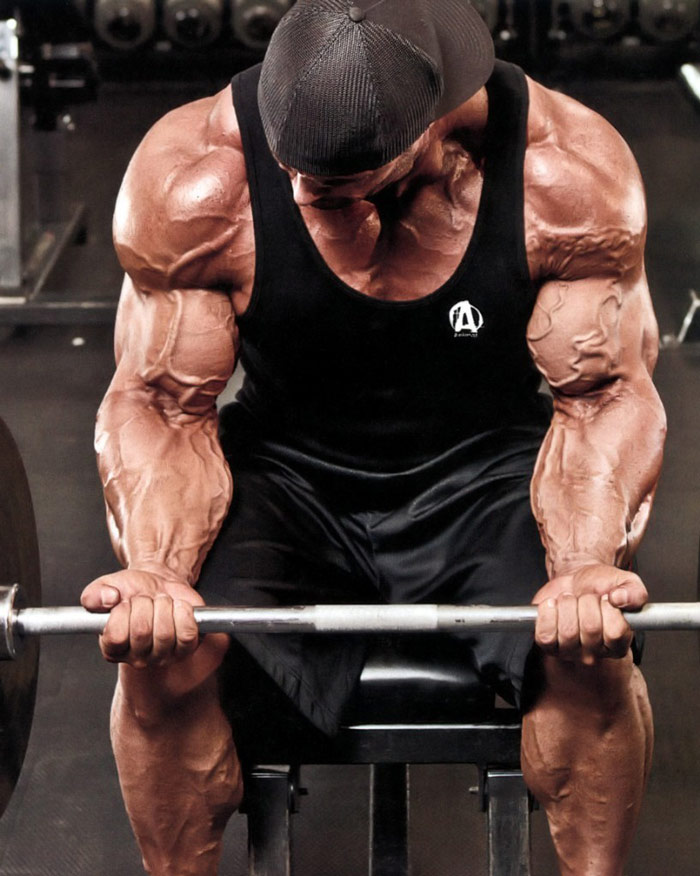
So now all the formalities are over, let’s get to it! Fortunately for us on the quest for blacksmith-worthy forearms wrist curls are both simple and effective.
To reap the rewards of regular wrist training less can actually be more. Studies have shown that just 2-3 forearm sessions a week offer up the same results of 10.
With that in mind aim to fit in 10-15 reps per set, with 2-3 exercises per session. This seems to be the sweet spot as any more could leave you tiring and impact your performance in other lifts.
Throw the following exercises into your routine after you’ve hit all your other essential exercises. Tag the following onto the end of a session as an accessory workout, or a final burnout.
Here’s how to master them like a pro…
Seated Pronated Wrist Curl
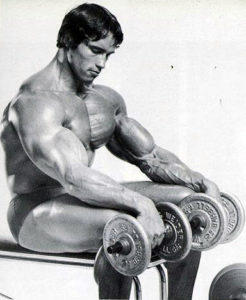
- Sit on a flat bench with feet shoulder width apart and knees at 90 degrees.
- Take two dumbbells, set yourself up with a pronated (overhand) grip, and rest your forearms on your knees.
- At this point, the dumbbells should be hovering out in front of the top shin. This is your starting position.
- Exhale and slowly extend the wrist raising the dumbbells towards the ceiling.
- Keep your mind in the muscle and contract at the top.
- Lower the wrist back to the starting position slowly and under control.
- Repeat, repeat, repeat, until the entire set is complete.
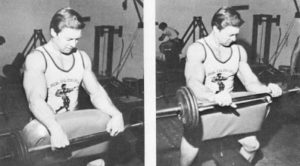
Seated Supinated Wrist Curl
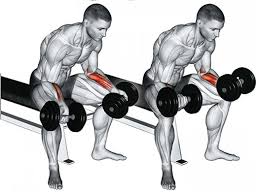
- Set yourself down on a flat bench with feet shoulder width apart and knees at 90 degrees.
- Grab a set of dumbbells with a supinated (palm up) grip. Then to enter the starting position rest your forearm muscles against your thighs so the underside of your wrist points upwards.
- The dumbbells should be hanging in free space in front of your knees. If they aren’t, adjust your position so the wrist and weight can move freely.
- Breathe out, and slowly flex the wrist, curling the dumbbell towards you in a controlled arc.
- Take a moment at the apex to contract the working muscle.
- Slowly lower the dumbbell back to the starting position.
- Do it again until you’ve hit the whole set!
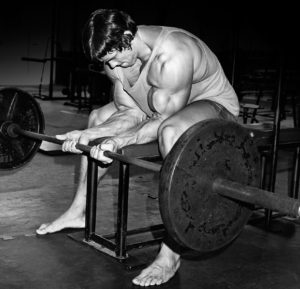
Standing Dumbbell Flexions and Extensions
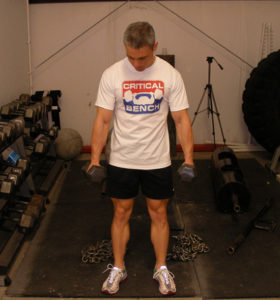
This exercise can be carried out either single-handedly or with two dumbbells. Try both and see which works best for you.
- Pick up two dumbbells of the same weight (or one) and lower them to your sides with palms facing inwards.
- Stand with feet shoulder-width apart, a neutral spine, arms abducted slightly, and eyes facing forward. This is your starting position.
- Exhale as you slowly curl the wrist (Flexion: Inside – Extension: Outside) through a complete range of motion without discomfort.
- Squeeze the working muscle once you reach the summit and spend a second here contracting.
- Slowly lower the dumbbell back to square one under control.
- Take a breath and go again, bro!
Standing Behind The Back Barbell Curl
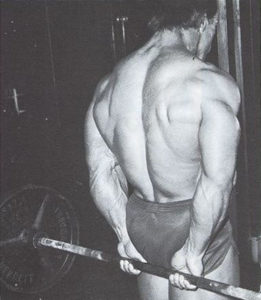
- Stand in a neutral stance with a barbell resting just behind your glutes, held using a pronated grip.
- Exhale and smoothly curl the bar upwards by flexing at the wrist joint.
- Freeze and squeeze at the top of the movement.
- Lower the barbell back to the starting position whilst inhaling.
- That’s one rep down!
Bonus Exercise: Seated Barbell Finger Curl
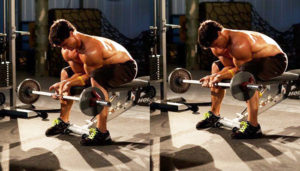
Okay, whilst this isn’t technically a wrist curl, it is an awesome grip developer. Attach it to the standard barbell wrist curls for a real forearm thrashing.
- Claim that bench again and sit down with knees at 90 degrees.
- Take your trusty barbell and employ a close supinated grip so your pinkies are almost touching. If this is a little too tight on the boulders, widen it to around shoulder width.
- Now you’re at square one for this exercise. You’ll want to return here after every rep.
- Exhale as you extend the wrist and roll the barbell to your finger ends. Make sure it doesn’t slip off, or else the whole exercise will be pointless.
- Once you’ve gone as far as you can physically manage, roll that sucker back up.
- Remember to exhale as you flex the wrist back into the starting blocks.
- Feel the burn and go again, bro!
Final Thoughts
Utilize the simple wrist curl and become the envy of your surroundings. Watch your forearms swell to the size of a silverback gorilla’s and muster the strength of one too.
Your vice-like grip will make those previously painful lifts seem like light work. Never again will you feel the demoralizing pull of unfolding fingers on the final five big lifts.
All of this means more gains to add to your already incredible physique. And if you’re reading this thinking “but I don’t even have a physique” then don’t sweat it. With wrist curls on your side, you’ll get there a whole lot quicker.
So instead of heading straight out to your car spend 10 more minutes firing up those forearms. If it’s good enough for Arnie and Scott it’s sure as hell good enough for you!
Now go train, bro. We expect that handshake to be twice as powerful next time we meet.
Ready to take your training to the next level? Check out these, bro…
